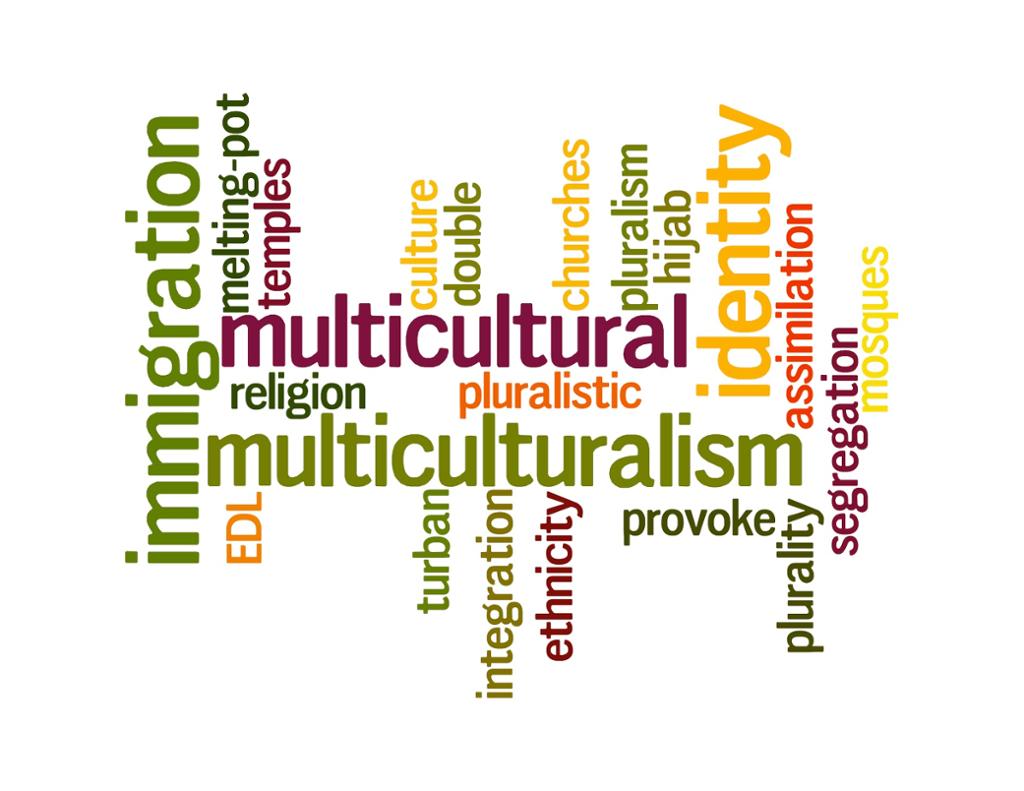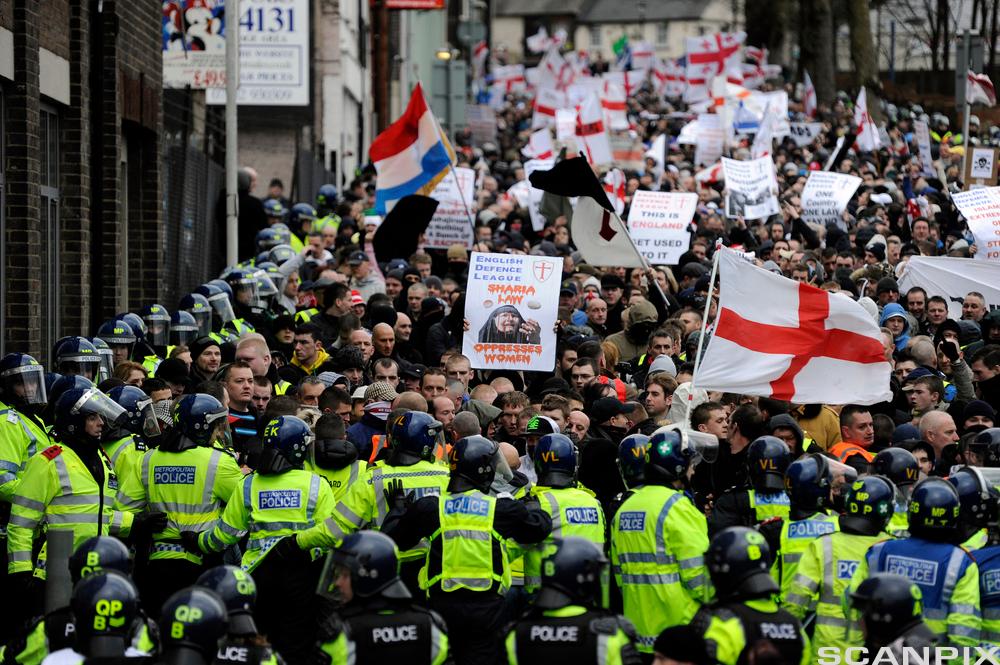
The 20th century changed the global power balance, and especially World War II created a new order where two new super powers emerged, at the expense of the European colonial powers like France, Germany, Spain, Portugal and Britain. Both America and the Soviet Union declared themselves as being anti-imperialistic and, in the Western World, America urged Britain to get rid of the Empire. In the post-war years, the concept of multiculturalism took on a new phase as it was linked to the immigration to European nations, particularly those with a former colonial history. Multiculturalism is a complex issue and can be approached from many different angles. In contemporary debates, it has come to be seen as a collective term for societies that are multi-ethnic and multi-faith, containing several groups of people with different ancestry.
Multiculturalism and Immigration
Most scholars agree that multiculturalism is a result of past and present immigration. After World War II, the need for labour was pressing as a result of war damage in European countries. The economy was generally poor in most of Europe, but fared much better on the other side of the Atlantic where there had been little or no war action. Since the post-war period, war has been one of the major push factors for people emigrating to other countries. For example, during the 1970s (1975-1981) there was a massive outpouring of Vietnamese refugees and boat people from Southeast Asia due to the Vietnamese invasion of Cambodia and the defeat of the Communist Khmer Rouge regime. Refugees fled to France, the USA, Canada and Australia. Under the dictator Idi Amin in the 70s, Uganda went through a scourge of ethnic cleansing leading to the expulsion of Asians, mostly Indian born. Refugees fled to Britain, Canada and America. Moreover, in the 90s the Western World witnessed the break-up of Yugoslavia with the subsequent war on the Balkans that led to a mass departure of refugees. In recent decades, those traditionally referred to as immigrants have rather been labelled asylum seekers and refugees as they often leave their home country due to famine, war or other natural disasters. Immigrants were frequently invited to or were able to settle in countries that did not have strict immigration controls.
Multiculturalism as Official Policy
Many countries have multiculturalism high up on the political agenda. Integration has played a vital role in policy making and politicians in several countries have passed race relations acts in an attempt to create equal opportunities for all, regardless of background. This is visible in education, in recruitment to public employment, in the media and other areas where there has been a political motivation to display diversity. On the other hand, it should be mentioned that there have been fierce political debates in some countries regarding, for instance, visible clothing like the hijab, the turban and the building of mosques, churches and temples. In France, the hijab debate provoked bitter resentment among ethnic minorities and white French, and in 2004 the French Parliament voted for forbidding the wearing of the hijab and other visible articles like Christian crosses and Jewish kippas.
Today’s Global Challenges

It can be argued that multiculturalism and plurality has brought with it a number of challenges both on a global scale and in countries with high contingents of ethnic minorities. Some of the challenges lie in accommodating everybody and protecting vulnerable groups from racism, prejudices and discrimination and at the same time giving newcomers a fair treatment. With larger gaps between people on a global scale, there is a tendency that people from the southern hemisphere try their fortunes in the northern. That creates problems in Europe, America, certain countries in Asia, in Canada and Oceania.
Notably, this has led to a competition for jobs, the spread of ghettos, poverty, unemployment and race riots. In some areas in the richer Western nations, there is much talk of a new, poor underclass of both first and second-generation immigrants. In Britain for example, this competition has been visible and strongly felt in some inner city urban areas where many people in the traditional working classes have been out of work for generations. There the competition for status, rank and employment has resulted in direct confrontations between black and white Britons. In such areas, with a high unemployment rate, it is easy to recruit people to extremist organisations and in Luton, just north of London, there have in recent years been severe clashes between members of extreme Muslim organisations and members of the right wing fascist English Defence League.
Trends
Trends in recent years seem to suggest a twofold approach to multicultural policies. On the one hand, there is an urge to maintain the specialities of the different ethnic groups' distinctiveness, while on the other hand, there seems to be an appeal for all groups in given societies to assimilate and embrace the country’s traditions, values and national identity. Many Western countries seem relaxed about the notion of double identity; that there is no problem in keeping the identity from your home country and, at the same time, developing a sense of national identity in the country of habitat.
At the beginning of the 21st century, the multicultural debate took a new turn; from ethnic and visible differences to more concealed and hidden cultural and religious practices. Particularly after 9/11, multicultural diversity was in some countries seen as a threat, not only to Western values, but also to Western civilisation. There was much talk of the ‘Clash of Civilisations’, a term used in an article by Samuel P. Huntington from 1993, to describe a new phase of world politics. Terrorism, as it occurred in America in 2001, in Madrid in 2004 and London 2005, has fuelled a negative debate where the centre of attention is fundamentalism represented by the few and not the many. The subsequent debate about human rights, free speech and democracy has hampered clearer national policies on multiculturalism and the War on Terror and anti-terror legislation combined with the invasions of Iraq and Afghanistan have further fostered scepticism rather than openness and tolerance.
As global citizens we rationally know that acts of terrorism and the views that they represent belong to a small minority and not the majority. Ethnic groups have for a long time contributed vastly to different societies making them richer in all sorts of ways. Multiculturalism is based on the diversity found in ethnic groups. Ethnic groups are not homogenous and are made of individual people who should be treated with respect and tolerance. Compassion and decency must never lose out to fear and bigotry.
Tasks and Activities
Vocabulary:
Multicultural Societies Explained
Discuss Cross-cultural Issues
The US and the UK are both multicultural societies. However, there are considerable differences between them. Gina Yashere, who is British-Nigerian, often talks about cross-cultural issues - either on an individual level or collectively. Watch her funny presentation of these issues and consider why the police officer said "I'm sorry Ma'am. I thought you were black."
Reading Statistics
Use this UN Census Statistics to document changes in ethnic composition in the USA, the UK and Australia.
Note that this document is very long and you will need to use the search features for pdf documents. The search window is located in the top menu bar. You should be able to copy parts of the document into a word processor by marking certain areas of the document.
- For each country pick three ethnic groups. Use the oldest census statistics for each country as your starting point. Then make a comparison to the newest census figures for the same ethnic groups. Present your key figures in a table. Note that some of the ethnic groups are not listed in all the censuses, make sure those that you pick are traceable in both censuses.
- Comment on any changes. Base your reasoning on historical and political changes and trends in the period in question.
- Finally use your text processor or a spreadsheet to create a graphic representation of your findings. Search on YouTube or other similar sites for guides on how to do this.
Search for:
OpenOffice Writer, insert and modify chart
Making a graph in Microsoft Word